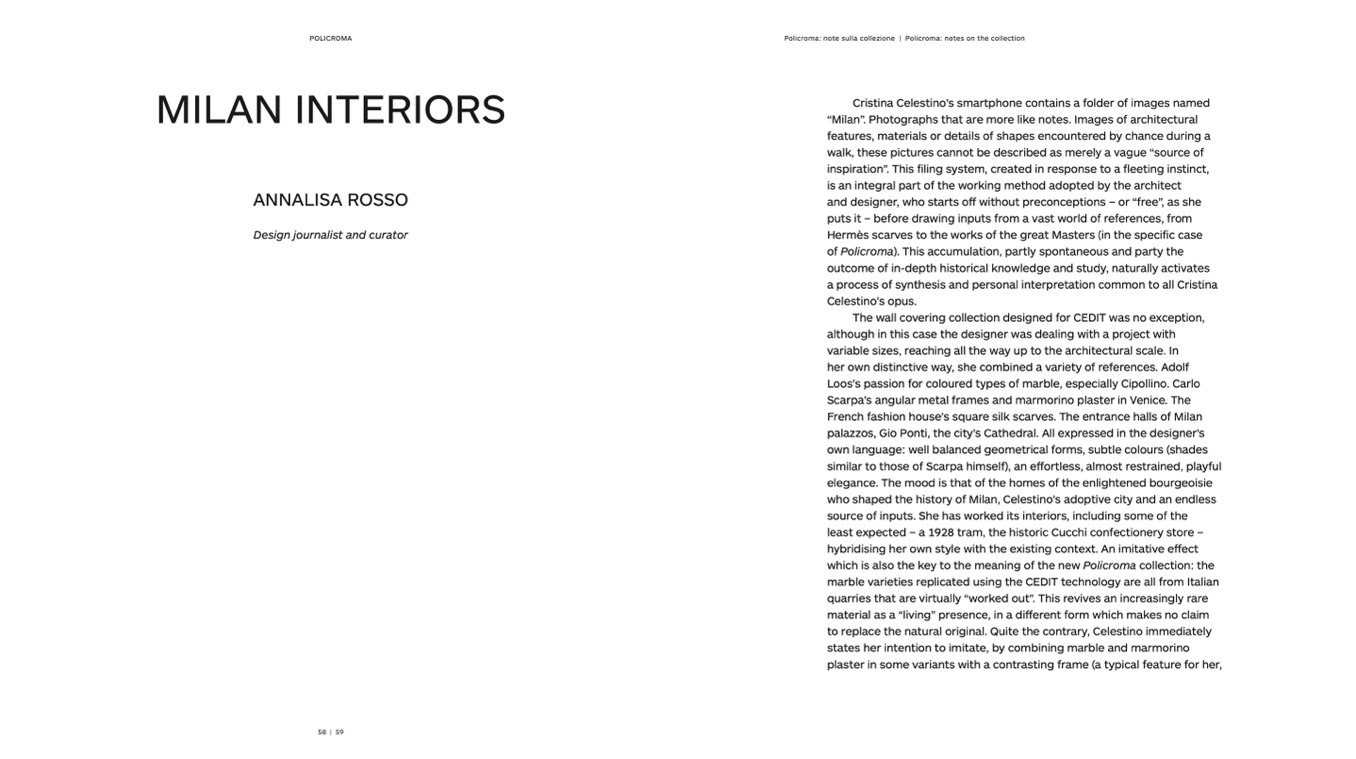
POLICROMA
Policroma: note sulla collezione | Policroma: notes on the collection
MILAN INTERIORS
ANNALISA ROSSO
Design journalist and curator
Cristina Celestino’s smartphone contains a folder of images named
“Milan”. Photographs that are more like notes. Images of architectural
features, materials or details of shapes encountered by chance during a
walk, these pictures cannot be described as merely a vague “source of
inspiration”. This filing system, created in response to a fleeting instinct,
is an integral part of the working method adopted by the architect
and designer, who starts off without preconceptions – or “free”, as she
puts it – before drawing inputs from a vast world of references, from
Hermès scarves to the works of the great Masters (in the specific case
of Policroma). This accumulation, partly spontaneous and party the
outcome of in-depth historical knowledge and study, naturally activates
a process of synthesis and personal interpretation common to all Cristina
Celestino’s opus.
The wall covering collection designed for CEDIT was no exception,
although in this case the designer was dealing with a project with
variable sizes, reaching all the way up to the architectural scale. In
her own distinctive way, she combined a variety of references. Adolf
Loos’s passion for coloured types of marble, especially Cipollino. Carlo
Scarpa’s angular metal frames and marmorino plaster in Venice. The
French fashion house’s square silk scarves. The entrance halls of Milan
palazzos, Gio Ponti, the city’s Cathedral. All expressed in the designer’s
own language: well balanced geometrical forms, subtle colours (shades
similar to those of Scarpa himself), an effortless, almost restrained, playful
elegance. The mood is that of the homes of the enlightened bourgeoisie
who shaped the history of Milan, Celestino’s adoptive city and an endless
source of inputs. She has worked its interiors, including some of the
least expected – a 1928 tram, the historic Cucchi confectionery store –
hybridising her own style with the existing context. An imitative effect
which is also the key to the meaning of the new Policroma collection: the
marble varieties replicated using the CEDIT technology are all from Italian
quarries that are virtually “worked out”. This revives an increasingly rare
material as a “living” presence, in a different form which makes no claim
to replace the natural original. Quite the contrary, Celestino immediately
states her intention to imitate, by combining marble and marmorino
plaster in some variants with a contrasting frame (a typical feature for her,
58 | 59

